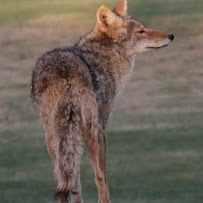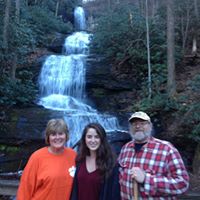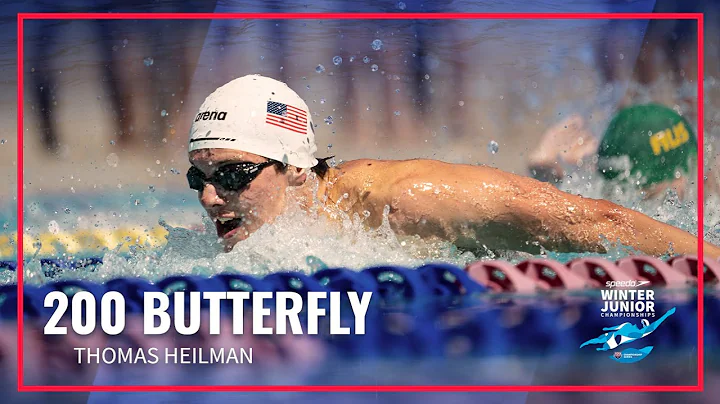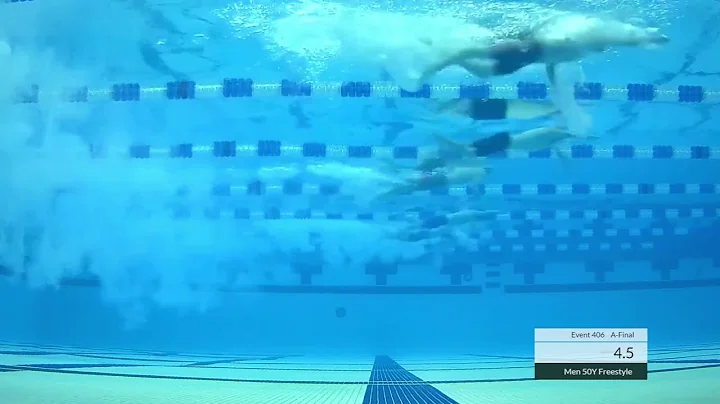Joseph M Heilman
age ~46
from Fargo, ND
- Also known as:
-
- Joe Heilman
- Phone and address:
- 1240 9Th St N, Fargo, ND 58102
Joseph Heilman Phones & Addresses
- 1240 9Th St N, Fargo, ND 58102
- Tioga, ND
- 3249 16Th Ave SW APT 3, Fargo, ND 58103
Work
-
Position:Machine Operators, Assemblers, and Inspectors Occupations
Education
-
Degree:High school graduate or higher
Us Patents
-
Spray Nozzle Error Detection
view source -
US Patent:20230023035, Jan 26, 2023
-
Filed:Jul 6, 2022
-
Appl. No.:17/811044
-
Inventors:- Fargo ND, US
Joseph A. Heilman - Fargo ND, US -
International Classification:B05B 12/08
G08B 21/18 -
Abstract:A monitoring system for an agricultural sprayer includes a spray nozzle, a pressure sensor, a flow rate sensor, and control circuitry. The spray nozzle is configured to generate a spray of a fluid, the pressure sensor is adjacent to the spray nozzle and is configured to measure a pressure of the fluid sprayed by the spray nozzle, and the flow rate sensor is adjacent to the spray nozzle and is configured to measure a flow rate of the fluid sprayed by the spray nozzle. The control circuitry is configured to receive the measured pressure from the pressure sensor, receive the measured flow rate from the flow rate sensor, and cause a user interface to display the measured pressure and the measured flow rate. Related methods and systems are also disclosed.
-
Systems And Methods For Monitoring Spray Quality
view source -
US Patent:20230025803, Jan 26, 2023
-
Filed:Jul 6, 2022
-
Appl. No.:17/811015
-
Inventors:- Fargo ND, US
Joseph A. Heilman - Fargo ND, US -
International Classification:B05B 12/08
B05B 12/12
A01M 7/00 -
Abstract:A monitoring system for an agricultural sprayer includes a spray nozzle, a pressure sensor, a flow rate sensor, and control circuitry. The spray nozzle is configured to generate a spray of a fluid, the pressure sensor is adjacent to the spray nozzle and is configured to measure a pressure of the fluid sprayed by the spray nozzle, and the flow rate sensor is adjacent to the spray nozzle and is configured to measure a flow rate of the fluid sprayed by the spray nozzle. The control circuitry is configured to receive the measured pressure from the pressure sensor, receive the measured flow rate from the flow rate sensor, and cause a user interface to display the measured pressure and the measured flow rate. Related methods and systems are also disclosed.
-
Spray Monitoring Systems, Devices, And Methods
view source -
US Patent:20230022504, Jan 26, 2023
-
Filed:Jul 6, 2022
-
Appl. No.:17/811031
-
Inventors:- Fargo ND, US
Joseph A. Heilman - Fargo ND, US -
International Classification:A01M 7/00
A01B 79/00
B05B 12/00 -
Abstract:A method of monitoring agricultural spray performance includes spraying a fluid from spray nozzles, sensing spray parameters (e.g., droplet size, a flow rate, an application density, or a pressure of the fluid) for the spray nozzles, receiving the spray parameters, generating an average spray parameter value, determining a minimum spray parameter value and a maximum spray parameter value, and displaying the average, minimum, and maximum spray parameter values. Other methods include spraying a fluid from a spray nozzle, sensing a spray parameter for the spray nozzle, detecting that the spray parameter has exceeded a pre-defined threshold value, displaying an alarm, and ceasing spraying the fluid from the spray nozzle. A user interface continues to display the alarm after the act of ceasing spraying the fluid. Related systems and other methods are also disclosed.
-
Innovative Spraying System
view source -
US Patent:20180111148, Apr 26, 2018
-
Filed:Mar 9, 2016
-
Appl. No.:15/557444
-
Inventors:- Fargo ND, US
Barry D. Batcheller - West Fargo ND, US
Marshall T. Bremer - Fargo ND, US
Bradley R. Thurow - Fargo ND, US
Nicholas L. Butts - West Fargo ND, US
Jeffrey L. Johnson - West Fargo ND, US
Paul A. Nystuen - West Fargo ND, US
Joseph A. Heilman - Fargo ND, US
Robert J. Volesky - West Fargo ND, US
Jonathan L. Tolstedt - Seattle WA, US -
International Classification:B05B 12/02
A01M 7/00
A01M 21/04
B05B 1/20
B05B 12/12
B05B 12/14
B05B 13/00
A01C 23/04 -
Abstract:An innovative spraying system, comprising features such as a weather station that senses environmental factors that may affect spraying operations, a system for creating and distributing droplets of a uniform and appropriate size, a flow management system that would allow the sprayer to control nozzle rate and direction individually, a high-rate flow system capable of filling the sprayer at rates of up to at least 400 gallons per minute, a modular chemical cartridge system, in which various chemicals are stored in pre-loaded, easy to install cartridges, a direct injection system, mixing chemicals and water as needed, optionally based on sensed changing conditions, electrostatic application of chemical to optimize the amount of chemical applied to plant matter.
-
Aerial Information Request System For Unmanned Aerial Vehicles
view source -
US Patent:20160071419, Mar 10, 2016
-
Filed:Sep 10, 2015
-
Appl. No.:14/850636
-
Inventors:- Fargo ND, US
Joseph A. Heilman - Fargo ND, US -
International Classification:G08G 5/00
-
Abstract:A system for managing user requests for information obtained by an unmanned aerial vehicle, comprising an internet-based user input device, an internet-based information request database application, an internet-based do-not-fly database application, an internet-based flight plan notification system application in communications with an existing, external aircraft safety system, and a communications link to an unmanned aerial vehicle, wherein a user can enter a request for information into the user input device, which sends the request for information to the information request database application, which processes the request for information by evaluating the request for information against information from the do-not-fly database application and information from the flight plan notification system to create a flight profile. The flight profile is then communicated to the unmanned aerial vehicle and to the flight plan notification system, wherein the flight plan notification system communicates the flight plan to the existing, external aircraft safety system.
-
Do-Not-Fly And Opt-Out Privacy Management System For Unmanned Aerial Vehicles
view source -
US Patent:20160071420, Mar 10, 2016
-
Filed:Sep 10, 2015
-
Appl. No.:14/850669
-
Inventors:- Fargo ND, US
Joseph A. Heilman - Fargo ND, US -
International Classification:G08G 5/00
-
Abstract:An opt-out privacy management system for an unmanned aerial vehicle flight planning application, comprising an internet-based user input device, an internet-based opt-out request management application, and an internet-based do-not-fly database application in communication with an existing, external aircraft safety system, wherein a user can enter a property opt-out request into the user input device, which sends the property opt-out request to the do-not-fly database application, and the do-not-fly database application communicates the property opt-out request to the at least one existing, external aircraft safety system.
-
Method And System For Optimizing Planting Operations
view source -
US Patent:20140379228, Dec 25, 2014
-
Filed:Jun 23, 2014
-
Appl. No.:14/312475
-
Inventors:- Fargo ND, US
Joseph A. Heilman - Fargo ND, US
David C. Batcheller - Fargo ND, US
Robert V. Weinmann - Wahpeton ND, US
Jeffrey L. Johnson - West Fargo ND, US
Paul D. Johnson - Fargo ND, US
Paul A. Nystuen - West Fargo ND, US -
International Classification:A01C 21/00
A01B 79/02
A01B 79/00
A01B 49/06
A01C 5/06 -
US Classification:701 50, 111170, 111149, 702 2
-
Abstract:An agricultural planting system and method comprising a soil sampling and analysis means, wherein soil samples are taken and analyzed in real-time during a planting operation (or, optionally, via a separate, prior operation) to determine the conditions and nutrient content of the soil, and a planting system, wherein the planting system is capable of planting seeds in any arbitrary position on an X-Y plane directly beneath the planting system, whereby the data gathered from the analyzed soil samples is used to determine the optimal placement of seeds or plants in a field in order to take advantage of the soil conditions present and to optimize crop yield.
-
Optical Image Monitoring System And Method For Unmanned Aerial Vehicles
view source -
US Patent:20140347482, Nov 27, 2014
-
Filed:Jun 9, 2014
-
Appl. No.:14/299979
-
Inventors:Robert V. Weinmann - Wahpeton ND, US
Joshua N. Gelinske - Fargo ND, US
Robert M. Allen - Reiles Acres ND, US
Johan A. Wiig - Paris, FR
Joseph A. Heilman - Fargo ND, US
Jeffrey L. Johnson - West Fargo ND, US
Jonathan L. Tolstedt - Fargo ND, US -
Assignee:Appareo Systems, LLC - Fargo ND
-
International Classification:B64D 43/00
H04N 5/247
G06T 7/00
B64C 39/02 -
US Classification:348144
-
Abstract:A system and method of acquiring information from an image of a vehicle in real time wherein at least one imaging device with advanced light metering capabilities is placed aboard a unmanned aerial vehicle, a computer processor means is provided to control the imaging device and the advanced light metering capabilities, the advanced light metering capabilities are used to capture an image of at least a portion of the unmanned aerial vehicle, and image recognition algorithms are used to identify the current state or position of the corresponding portion of the unmanned aerial vehicle.
Resumes

Representative At North Dakota House Of Representatives
view sourceLocation:
Fargo, North Dakota Area
Industry:
Marketing and Advertising

Joseph Heilman
view sourceLocation:
United States

Joseph Heilman
view sourceLocation:
United States

Joseph Heilman
view sourceLocation:
United States
Googleplus

Joseph Heilman

Joseph Heilman

Joseph Heilman

Joe Heilman
view source
Joseph Heilman
view source
John Joseph Heilman
view source
Joseph Heilman
view source
Joseph Heilman
view source
Joseph Heilman
view source
Joseph Heilman Jes
view source
Joseph Heilman
view sourcePlaxo

Joseph Heilman
view sourceTokyo, Japan
Classmates

Joseph Heilman
view sourceSchools:
Academia La Castellana Caracas WY 1966-1969
Community:
John Mehler, Sofia Benitez

Joseph Heilman
view sourceSchools:
Cle Elum-Roslyn High School Cle Elum WA 1984-1988
Community:
Lance Ricord, Debra Johnson, Jeffery Andrews

Joseph Heilman
view sourceSchools:
Notre Dame High School Easton PA 1968-1972
Community:
Jim Cervasi, Michelle Komar, Cindy Badway

Joe Heilman, Rugby High S...
view source
Joe Heilman, Sacred Heart...
view source
Notre Dame High School, E...
view sourceGraduates:
Joseph Heilman (1968-1972),
Shannon Wagner (1995-1999),
Chuck Licata (1975-1979),
Scott Arcury (2003-2007)
Shannon Wagner (1995-1999),
Chuck Licata (1975-1979),
Scott Arcury (2003-2007)

North Bellingham Elementa...
view sourceGraduates:
Joe Heilman (1988-1991),
Pamela Tom (1979-1985),
Jodi Holmwood (1994-2000),
Jesse Brand (1985-1986)
Pamela Tom (1979-1985),
Jodi Holmwood (1994-2000),
Jesse Brand (1985-1986)

North Baltimore High Scho...
view sourceGraduates:
Joe Heilman (1977-1981),
Donna Kepling (1980-1984),
Cherie Lentz (1989-1993),
Cynthia Harris (1961-1965),
Laurie Carles (1981-1985)
Donna Kepling (1980-1984),
Cherie Lentz (1989-1993),
Cynthia Harris (1961-1965),
Laurie Carles (1981-1985)
Youtube
Get Report for Joseph M Heilman from Fargo, ND, age ~46





